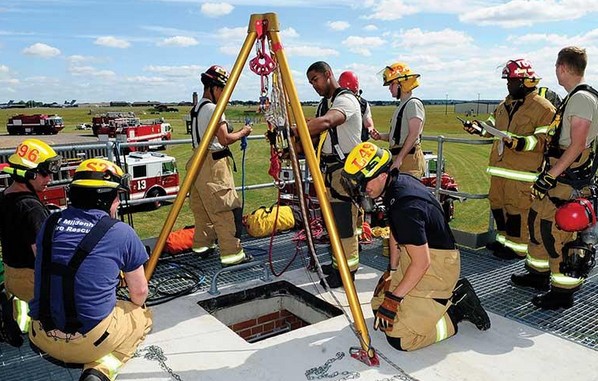
We can all agree that operating in a confined space can be challenging and problematic with safety. Therefore, you should understand a few things before you start with the process.
You can find confined spaces in almost any industry. At the same time, due to its nature, you should enter inside with a high level of caution, while employers should guarantee and implement safety precautions to prevent potential issues from happening.
If something happens, you should find confined space services to rescue employees inside of it. Based on OSHA, more than two million workers operate within restricted areas. At the same time, it is vital to comply with safety standards, which may reduce five thousand lost-day cases, fifty-three employee deaths, and six thousand accidents annually.
However, fatalities and injuries happen because workers and employers do not control, plan, and recognize potential hazards in this line of work. Fatalities happen due to a lack of well-planned rescue combined with monitoring, evaluating, and testing the area before someone enters inside.
Things to Know About Confined Space

If you wish to identify a particular area as a confined space, you should first take safety measures. Generally, they are not explicitly designed for people, but your employees can fit inside. However, if you are operating within a confined area, you should take specific precautions and other issues.
OSHA states that a confined space must feature these characteristics:
- It is significant for at least a single employee to enter inside and handle a particular work
- Of course, it is not for continuous work, which means an employee should get out after finished work
- It comes with restricted or limited means of exit or entry
You should click here to visit OSHA’s official website.
Generally, numerous spaces fall into a confined category, including sumps, tanks, utility access holes, storage bins, silos, pipelines, and tunnels, among others.
Things to Consider Before Entering Inside
It is essential to understand a few things before you enter inside. We decided to present you with a few safety factors you should consider beforehand.
You do not have to follow them in order but remember that all of them are highly important.
-
Exit and Entry Plan
Although it is evident that both employers and employees exist and enter the space, it is not as simple as most people think. The main goal is to create an exit and entry strategy to prevent potential issues within a confined space.
Since you will not be able to maneuver correctly, you should fit into place and find a way to get out of it if something happens. Therefore, you should have a comprehensive and straightforward understanding of getting in and out safely as soon as you finish a particular work.
-
Atmosphere is Essential
Another essential thing about confined areas is the atmosphere because you should test it by using properly and specifically designed equipment to detect present gases and chemicals.
You should conduct it inside and determine whether exposure limits are below or above the threshold. Besides, you should carry out the testing, which will help you decide whether or not you can use combustible tools inside or not.
According to OSHA, you should test atmosphere in this order:
- Oxygen
- Combustible gases
- Toxic vapors and gases
Another important consideration is you should test the atmosphere inside frequently to ensure overall safety for your employees. When employees exit the area and decide to re-enter, you should try it again to prevent potential accidents and injuries.
-
Lighting
The main problem with confined areas is the inability to take advantage of overhead lighting, which would increase your convenience, among other things. Therefore, moving in the dark may increase the chances of falls, trips, slips, and other accidents.
You cannot avoid these issues unless you can see them, which is why you should take advantage of different lighting sources that are specifically required for environments with limited spaces.
It is vital to visit this link: https://en.wikipedia.org/wiki/Confined_space_rescue to learn more about the confined space rescue process.
-
Equipment
Using lousy or damaged equipment may put you at risk due to its inefficiency. Therefore, according to health and safety professionals, you should regularly inspect the equipment to ensure it is in perfect shape.
The main goal of your operation is to keep your employees as safe as possible, which is why you should create an honest assessment of the shape of the equipment. Even if it means you should delay entering, it is way better to do it than to risk the life of your staff.
The best way to ensure your equipment is in perfect shape is by storing it properly. If you throw it around or place it in an unwanted area, you can compromise it. Besides, as soon as you notice damage signs, you should think about each aspect along the way.